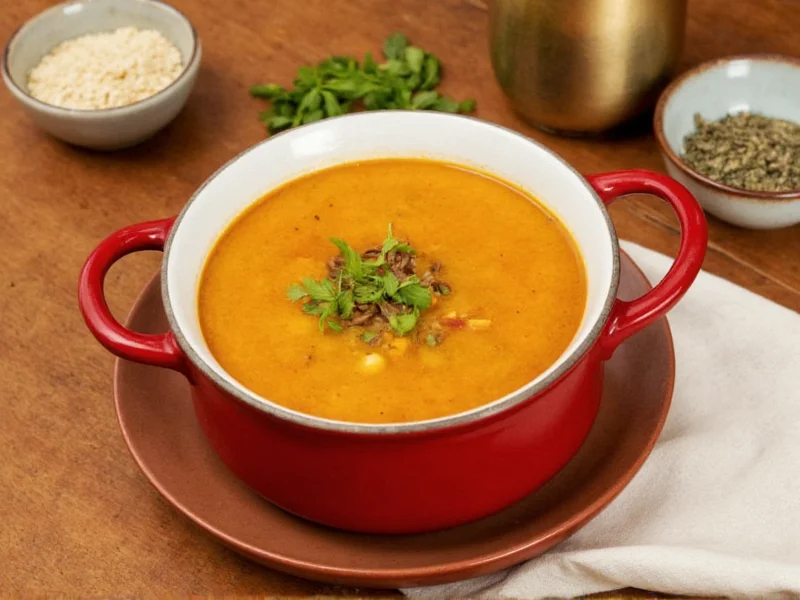When crafting the perfect soup, few herbs deliver the depth and complexity of thyme. This versatile perennial transforms ordinary broths into extraordinary culinary experiences through its unique flavor profile that bridges earthy, minty, and slightly lemony notes. Understanding how to properly incorporate thyme into your soup-making process elevates your results from basic to restaurant-quality.
Understanding Thyme Varieties for Soup Applications
Not all thyme works equally well in soups. The most common varieties you'll encounter include:
- French thyme (Thymus vulgaris) - The gold standard for soup making with its robust flavor and excellent heat stability
- Lemon thyme - Adds citrus notes that work particularly well in seafood and vegetable soups
- English thyme - Slightly milder than French thyme, suitable for delicate broths
- Winter thyme - More pungent, best for hearty meat-based soups
Professional chefs consistently recommend French thyme for most soup applications due to its balanced flavor that withstands long cooking times without becoming bitter. When selecting fresh thyme, look for vibrant green leaves firmly attached to stiff, woody stems without signs of wilting or yellowing.
Fresh vs Dried Thyme: Measurement and Timing Guide
The conversion between fresh and dried thyme isn't a simple 1:1 ratio due to concentration differences. Understanding proper measurements prevents overpowering your soup:
| Soup Volume | Fresh Thyme | Dried Thyme | Optimal Addition Time |
|---|---|---|---|
| 4 cups (1 quart) | 1-2 sprigs or 1 tsp leaves | ½ tsp | First 15 minutes of cooking |
| 8 cups (2 quarts) | 2-3 sprigs or 2 tsp leaves | 1 tsp | First 15 minutes of cooking |
| 12 cups (3 quarts) | 3-4 sprigs or 1 tbsp leaves | 1½ tsp | First 15 minutes of cooking |
Always add dried thyme early in the cooking process to allow proper rehydration and flavor dispersion. Fresh thyme stems can be added at the beginning and removed before serving, while fresh leaves work well added in the last 10-15 minutes for brighter flavor. Never add excessive thyme at the end of cooking, as it won't have time to properly infuse the broth.
Thyme Pairing Strategies for Different Soup Types
Certain thyme varieties complement specific soup bases better than others. Consider these professional pairing recommendations when planning your next soup creation:
- Chicken soup - French thyme with a bay leaf creates the classic flavor foundation. Add during the initial simmering of bones for maximum extraction.
- Tomato soup - Lemon thyme balances acidity beautifully. Stir in fresh leaves during the last 5 minutes of cooking.
- Bean and legume soups - Robust winter thyme withstands long cooking times. Tie sprigs with kitchen twine for easy removal.
- Cream-based soups - Use half the recommended amount as dairy amplifies herbal flavors. Add dried thyme early and fresh leaves at the end.
- Seafood soups - Delicate English thyme prevents overpowering delicate fish flavors. Add during the last 10 minutes of cooking.
Avoiding Common Thyme Mistakes in Soup Making
Even experienced home cooks make these thyme-related errors that compromise soup quality:
- Overprocessing thyme - Blending whole sprigs creates bitter, woody flavors. Remove stems before pureeing or serving.
- Incorrect storage - Refrigerated fresh thyme lasts only 1-2 weeks. Freeze in olive oil for longer preservation without flavor loss.
- Adding at wrong time - Dried thyme needs 20+ minutes to rehydrate properly; adding too late results in gritty, concentrated bursts of flavor.
- Using expired dried thyme - Dried herbs lose potency after 6-12 months. Test by rubbing between fingers - if little aroma releases, replace.
- Ignoring stem removal - Woody thyme stems become unpleasantly tough during cooking and should always be removed before serving.
Thyme Substitutions When You've Run Out
Ran out of thyme mid-recipe? These substitutions work in soup applications, though none perfectly replicate thyme's unique profile:
- Oregano - Use 75% of thyme amount; best for tomato-based soups
- Marjoram - Use equal amount; milder flavor works in delicate broths
- Herbes de Provence - Contains thyme plus complementary herbs; use 80% of thyme amount
- Rosemary - Use 50% of thyme amount; best for hearty meat soups only
- Poultry seasoning - Contains thyme plus other spices; use 75% of thyme amount
Remember that substituting herbs changes your soup's flavor profile significantly. When possible, visit a local market for fresh thyme rather than relying on substitutions for critical recipes.
Preserving Thyme Flavor Through Proper Storage
Maximize your thyme investment with these professional storage techniques:
- Fresh thyme - Store upright in a glass with 1 inch of water, covered loosely with a plastic bag in the refrigerator (lasts 2-3 weeks)
- Dried thyme - Keep in airtight container away from light and heat (maintains potency 6-12 months)
- Freezing method - Chop leaves, mix with olive oil, and freeze in ice cube trays for ready-to-use portions
- Drying method - Hang small bundles upside down in a dark, well-ventilated area for 1-2 weeks
Test dried thyme potency by rubbing between your fingers. If little aroma releases, it's time for a fresh supply. Properly stored thyme maintains its essential oils that deliver that signature soup-enhancing flavor.











 浙公网安备
33010002000092号
浙公网安备
33010002000092号 浙B2-20120091-4
浙B2-20120091-4